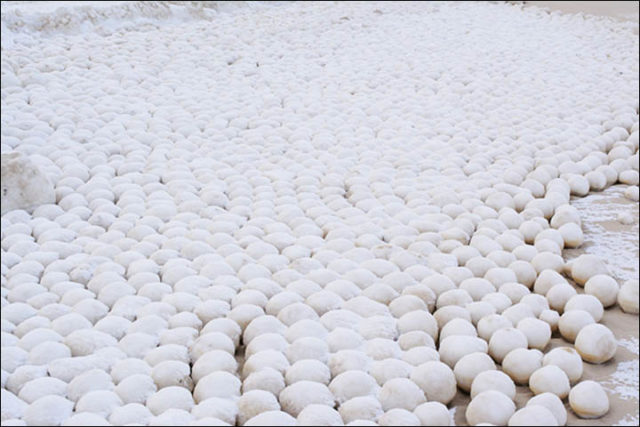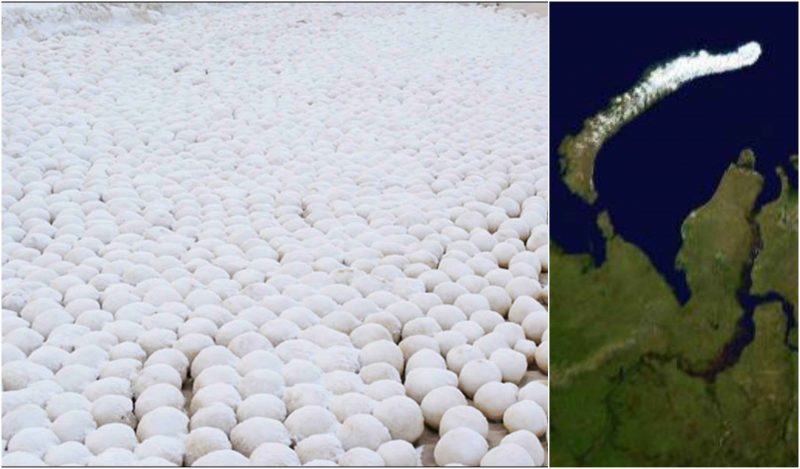A very rare event has occurred on a beach in northwest Siberia. Along an 11 mile stretch of the Siberian coastline in the Gulf of Ob lay hundreds of frozen snowballs with size that varies between the measurement of a tennis ball up to 3 feet wide.
This is a rare but natural phenomenon that is related to the weather fronts moving across Western Europe and North America this winter. Scientists are predicting that this is a sign of severe weather that would hit North America in mid to late winter.

The snowballs form when the water from the Gulf of Ob rose high enough to cover the beach in ice. Just like when children make snowballs by rolling them across the snow, the surf caused the ice orbs to roll back and forth, picking up more and more ice and creating the field of thousands of snowballs on the beach.
Siberia has reached nearly record cold temperatures this winter, and the snow cover hasn’t been matched in depth for this time of the year since 1998. In some areas, the snow spheres have piled up to build natural walls.
For this phenomenon to occur, it takes a rare combination of ice formation, temperatures, and currents. In the beginning, there needs to be slob ice, or sludge ice, which is formed on top of the water and acted upon by wind, terrain, and temperature, BBC News reported.

The locals from the village of Nyda, just above the Arctic Circle, say that they have never seen this before. The phenomenon was captured on film and in photographs posted online that caught the media’s attention. The snowballs need many components to coincide in the natural environment to form, so they are rare.
But this has happened before in other places in the world. On the shores of Lake Michigan in the U.S. balls formed when the turbulence on the lake broke up the slush in pieces that were tumbled in the freezing water and grew into balls.

The Gulf of Finland also saw something similar back in 2015, except those ice balls were only 10 centimeters in size.
Read another story from us: Shake, rattle, and roll: Bronze age rattle found in Siberia
The Finnish ones appeared when ice crystals formed in the shallow surf and grew as they were rocked back and forth in the surf.
